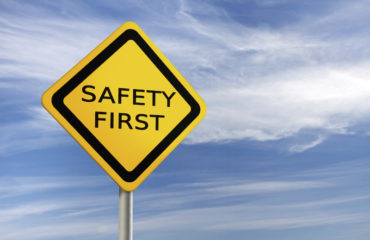Impairment and Distraction Still on List
Say the name the “National Transportation Safety Board” (NTSB) and you have also declared this government entity’s purpose—transportation safety. By investigating crashes in all modes of transportation, NTSB has a unique perspective on what should be done to make all manners of transport safe. NTSB determines what caused a crash and then based on the investigation and the research, it makes recommendations on what we must do to be safer. To raise the bar, and focus the discussion on what can and should be done now, the NTSB annually provides a “Most Wanted List.” Last week the NTSB provided its priorities for 2015.
“The Most Wanted List is our roadmap for 2015,” said NTSB Acting Chairman Christopher A. Hart. “We want it to be a roadmap for policy makers and legislators as well. These are safety improvements for which the time is ripe for action.”
Impairment and Traffic Safety
While not listed in any particular order, distraction and impairment are still key issues for the NTSB, and both are on the Most Wanted List again this year. According to the National Highway Traffic Safety Administration, in 2012, about one in 10 drivers in fatal crashes were distracted. In almost a third of fatal crashes, a driver was impaired by alcohol.
However it is important to remember that alcohol is not the only substance that causes impairment. It can also happen from the use of illicit drugs, (including marijuana) and legal drugs, including prescription medication.
“While many recognize the impairment potential of illicit drugs, they may not appreciate the potentially impairing effects of prescribed or over-the-counter medications, especially in combinations.” NTSB MWL – End Substance Impairment in Transportation
10,076 people died because of impaired driving in 2013. Significant reductions in the number of fatalities have been achieved over the past several decades, but we are still seeing a substantial number of people killed because a driver was impaired.
NTSB has made 17 recommendations on ending impaired driving including:
- Lowering the BAC limit to .05
- Increasing the use of high-visibility enforcement
- Using in-vehicle alcohol detection technology
- Requiring ignition interlocks for all DWI offenders
- Increasing use of DWI Courts for repeat DWI offenders
To read the full report, click here.
Distracted Driving Matters
Distraction is another key topic listed on the NTSB’s Most Wanted List. Focusing primarily on Personal Electronic Devices (PED), the NTSB has called on everyone to “Disconnect from Deadly Distractions.”
Ultimately, a cultural shift will be required, and it must begin with each of us. Surveys repeatedly show that we know that PED distraction is dangerous while driving, yet we admit to indulging. It’s time to do what we know is right and disconnect from deadly distractions. NTSB MWL: Disconnect from Deadly Distractions
Distracted driving typically involves a visual distraction, a manual distraction, a cognitive distraction or a combination of the three. When your eyes are not on the road, or your hands are not on the wheel or your mind is not focused on driving, you are driving distracted. One of the biggest contributors to distracted driving are cell phones and other similar electronic devices. Every year, thousands of people are killed and tens of thousands injured because of people texting and talking on a cell phone. In December 2011, the NTSB recommended a complete ban of all cell phone use while driving.
Additional Safety Topics
New topics on NTSB’s Most Wanted List for 2015 include: Rail tank cars that carry crude oil, ethanol and other hazardous materials across the country must do it more safely; requiring that transportation operators be medically fit for duty; strengthening commercial trucking safety; and requiring pilots to strengthen procedural compliance.
‘’This list is grounded in the accident investigations by which NTSB learns safety lessons, and in the recommendations that are NTSB’s primary safety product,’’ Hart said. “At the NTSB we want to make new strides in transportation safety in 2015, and we want to lay the groundwork for years that are even safer.”
To read more about NTSB’s Most Wanted List for 2015, visit www.ntsb.gov/mostwanted for more details. To watch a video of NTSB’s Most Wanted List, click here.
Below is an edited video of the NTSB Press conference announcing its Most Wanted List.







